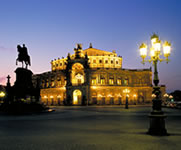
"Monastery hopping" might seem a touch irreverent, but unlike "island hopping" it is a calm and contemplative way to travel. Many years ago the red sandstone which is characteristic of the northern Black Forest landscape formed natural, almost flat plateaus that became covered with coniferous forest. Villages developed in the clearings and rivers cut deep, gorge-like valleys into the red sandstone massif. During the last Ice Age the northern Black Forest was covered by the Kniebis glacier. As it melted away, ravines and corrie lakes were formed. The Monasteries Route runs for approximately 104 kilometres through the fairytale northern Black Forest from Alpirsbach to Maulbronn, offering a fascinating glimpse into the world of the foremost monasteries.

The monasteries in the "black forest": long ago, people avoided the "black forest" because it seemed too forbidding and inaccessible. Monks were the first to settle here. Over time their secluded dwellings developed into splendid monasteries, which in turn encouraged more people and greater accessibility. The red sandstone monastery at Alpirsbach has dominated the picturesque Kinzig valley for nine hundred years. Formerly home to Benedictine monks, it is an oasis of calm in the heart of the town. The building is an example of the Benedictine sense of the monumental and preference for clean, orderly Romanesque forms. There are concerts in the monastery and cloister and "Culture in the monastery" workshops, including freestyle painting, folk dance, meditative dance etc. Alpirsbach Monastery is one of south Germany's 11th-century reformed monasteries and an impressive illustration of Cluniac architecture. It offers an insight into not one but two traditional monastery crafts - glassblowing and beer brewing. A beer brewing seminar is a good way to find out more.
 Skip to content
Skip to navigation
Skip to subnavigation
Skip to search
Skip to content
Skip to navigation
Skip to subnavigation
Skip to search







